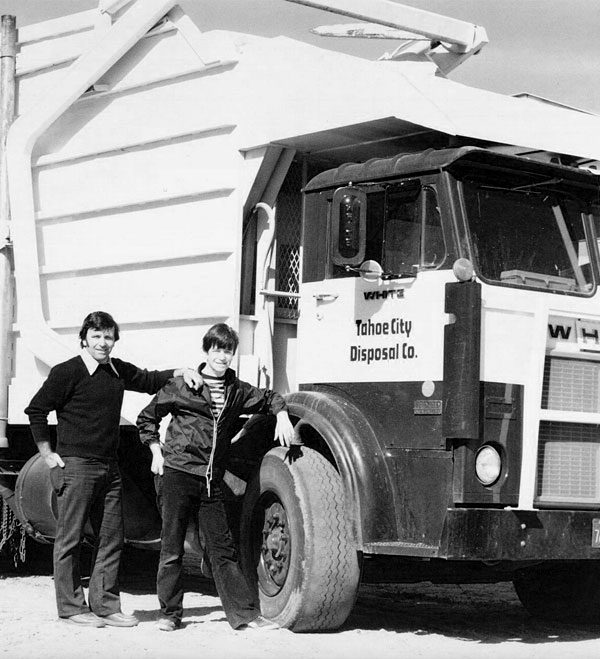After the big earthquake and fire, Rafelin returned to San Francisco in 1906. The reconstruction of the city and its continued growth meant restricted space, which in turn meant that people could no longer bury garbage in their back yards. Various small garbage collection companies were formed to capitalize on the growing need for refuse removal services. With all companies, garbage was collected from customers, hauled by horse and cart, and dumped in the bay. In 1911 Rafelin was one of four men who founded the San Francisco Scavenger Company, consisting of the four partners, four horses and two carts. Rivalries were fierce between the various collection groups. Customers were frequently stolen and fighting was not uncommon, especially at group events, such as picnics, where alcohol was present. In 1916-17, in efforts to bring order and organization to the industry, the many collection groups merged as a unified force in the form of two companies, the Scavenger Protective and the Sunset Scavengers. A short time later, Rafelin sold his shares and returned to Italy to live out his years.
In San Francisco, the regular workday began at 2:00 a.m. and averaged ten to twelve hours each day, first collecting garbage and then collecting payments. To service alley cans Silvano would first kick the containers to scare the rats, and then jump to a pressure stance between the walls while the vermin ran out. When safe, he’d let himself down and place a large canvas tarp on the ground to dump the material in to more quickly haul it back to the truck. The truck had an open box in the back with stairs on the front. Loads of garbage had to be carried up the stairs where they were dumped in the open box and jumped on in order to compress the load. The vehicle was controlled with a large friction lever for braking, which could generate some tense moments with a full load on the hills of San Francisco. The truck would be filled twice and dumped into the bay each time as was customary until the late sixties. After the route and a return home for dinner, workers were expected to go door to door for bill collection in the evenings, when people were home. “Come back tomorrow” they’d always say. Many of the rural properties with acreage continued to bury waste in their back yards, but at that time the plastics and packaging materials that we have now did not exist, so materials basically became compost.
The late sixties brought first mention of “ecology” and recycling, but little was done in the waste industry. Some people naturally reused what they could, but most garbage was buried and covered each day. Witnessing the waste of food from the local grocery store, Silvano purchased a pig and fattened him from the dairy spoils. But policies changed and soon the grocery stores were sending the materials down the disposer and into the sewers. Silvano attempted composting some materials, but the cold Tahoe climate and its short seasons proved too impractical for a successful composting program. As residents and visitors slowly increased in the Tahoe area, so did problems with bears. Today, groups have formed to advocate responsible disposal of trash through the use of bear-resistant metal sheds.





